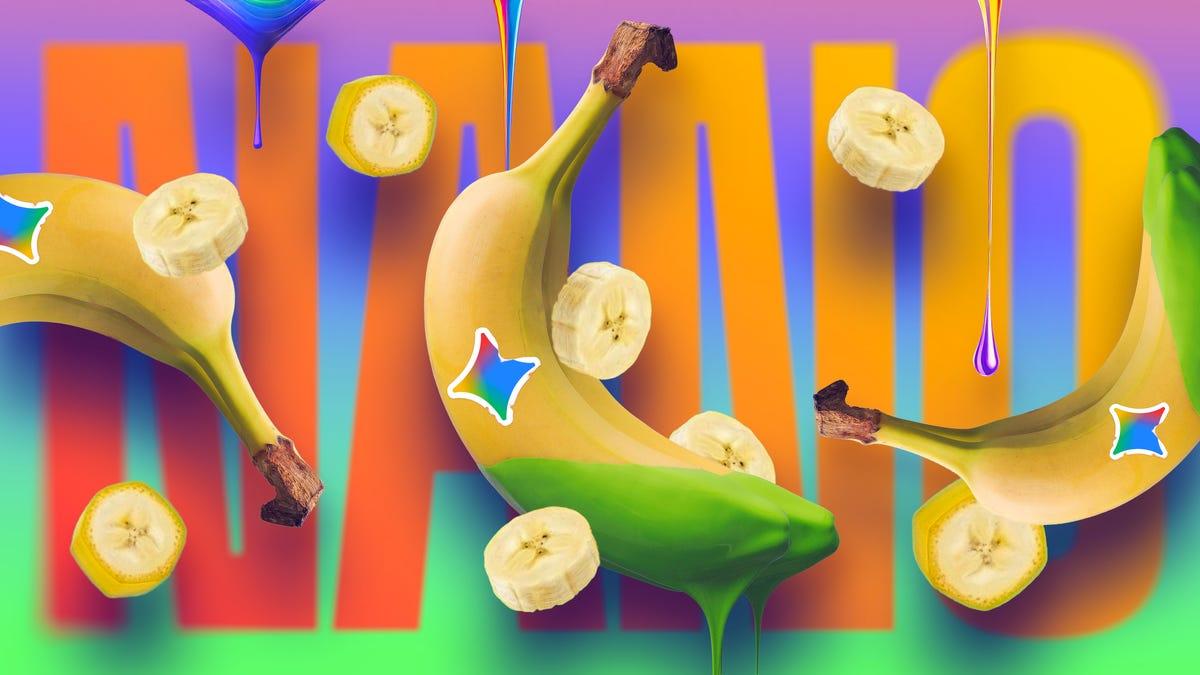Behind the scenes of 'Wicked: For Good', director John M. Sue, Ariana Grande, Cynthia Erivo, Jonathan Bailey and the entire creative team.
Made 'evil: for good' by flying, belting and "great" travel
The cast and crew of the second film 'Khirab' talk about the decision to split the film into two, live on stage and how to shoot the final song.
[This story steals thieves from evil: beautiful.]
In "No Good Deed," Elphaba's big solo number from Wicked: For Good, Cynthia Erivo is shown flying through flames and flying monkeys as she sings the enchanting song.
In reality, Eriva did this while performing live in a harness, with real flames surrounding her and being hit by concentrated jets of air from wind machine pipes.She spent time in rigging rehearsals to practice the moment when she quickly rose about 18 feet into the air and then slowly descended, as well as the general act of singing while flying.
"I'm parallel to the ground, so my feet are on the floor, and when I'm flying I'm basically lying on my stomach, which is a crazy way to sing," Erivo said.
Sound mixer Simon Hayes is in the background, working to keep the microphone under the jeming, or top, hat out of the way.
"I said, 'Boys, boys, whatever happens, don't stamp the hat.'
Just over a year after the release of Daj: Good, to bring back the entire cast of the first film, including Arevo, Ariana Grande, Michelle Yeoh, Jonathan Bailey and Jeff Goldblum.The story begins with the alphabet of Arevo as Oz turns against the Wizard (Goldblum) for his lies and cruelty to animals.Grande's Glinda has allied herself with a witch, but now struggles with that decision, as well as her challenged relationship with Alphabet and her lover, Farrow (Bailey).
When director Jon M. Chu first came on board the project, produced by Universal and Marc Platt, he found himself in a lengthy debate over whether to turn Wicked into one or two films.Scripts had already been written for both scenarios, but neither was ready yet and the one-part version was particularly scarce.The idea of making a longer film with one intermission was scrapped, but Chu continued to push for two.
"When people are asked to believe the stakes, the emotional stakes, they are these women's real lives, what do they know? What do they know? What have they been taught and what do they fall in front of? Chu explained.
The creative team then had the challenge of expanding the 60-minute second act of the stage show into a full-length film.The breakthrough came for screenwriters Winnie Holzman and Dana Fox because they realized they could use the second film to focus on Glinda's character, flaws and all, including a backstory on her childhood desire for magic.
"We started to realize that we could bring more detail, nuance and intimacy to what Glinda was going through, and that whatever we added to Glinda would also enhance Elphaba's arc and journey," says Holzman, who also wrote the stage show.
A flashback shown in the film shows Glinda unsuccessfully attempting a spell at her birthday party, surprising Grande.She had done extensive acting prep to prepare herself for Glinda's dramatic arc in the film, which featured long shots and close-ups of Grande during some of her worst moments.
"I didn't know they were going to be a flashback to her childhood, but it worked out well because it's something I mentioned a lot in preparing for my role," says Grande."When you show Glinda being triggered by all these heartbreaking events, you see how these dark moments push her into the light."
Elfba starts out in a strong but isolated position, going through feelings of anger and "doing well" before disappearing, until she accepts that she no longer belongs to Oz.
"When you understand the complexity of the house, we have to understand the complexity of the house, or when you're not there, you're like there, you don't feel like you're very current, resonant ideas, it's like you're very current, resonant ideas," Chu says.
Both movies were shot simultaneously: "It's a piece of shit, as they say," says Chu.To find out where he was in the process, Chu built a more secure "war room" with a progression of images, patterns and colors used in each scene of both films.The differences are evident as the last 40 minutes of the first film take place over a long sunset, which fades into darkness for much of the second film.Chu and cinematographer Alice Brooks, a longtime collaborator, also chose the motifs to anchor each scene.
"Some of the focus of the first movie is desires and choices and desires and desires and dreams, and the second movie is sacrifice and surrender and consequences," Brooks said.
Grandfather had a written script, like Erivo, he wore different makeup in the places where he was in his Arc positions.Before taking the passage, the group is prepared a lot, including the choreography and the composition of 20 different numbers.CHU also sat down with the main cast for an extensive chat about their characters.
“We don’t make movies by mistake.
The director's playfulness translates into the song "Wonderful", in which the Wizard tries to convince Elphaba to join him.Choo wanted to build this scene around the sense of wonder he felt as a child on the Peter Pan ride at Disneyland.Brooks took this advice to heart and spent several days traveling before filming.The actual train, or practical roller coaster, was built on the set to carry Erivo and Grande, strapped in and sitting on broomsticks, from the top of the Wizard's control room to the bottom.
After the scene and song are added by Glinda, also added by Fox's co-writer Glinda, later writer Fox, Elphaba and Glinda spend a lot of time in the second act, and Glinda notes that she can be persuaded to join the master.
"If we'd thought about doing it in the show, we would have," admits composer Stephen Schwartz."That's such a good idea."
To aid in the development of the expanded character, Schwartz wrote two new songs for the second installment.
"I think you're not, and I think this is the first time you've had to admit to yourself, 'Why do you want something you don't really want?'" Eriko said.
The second song: "The Girl in the Bubble" comes to a flashpoint as she decides to leave the comforts of her old life and leave Eliphage.It buys a live camera and edge in its housing with parallel mirrors, waiting for the house - with the memory of the house.
"I wanted it to be a pretty simple, musical, not flashy, but really instinctive song. And I wanted the music to be almost folky, so Ariana mostly uses that very quiet and sad part of her voice that she has. Although, because it's Glinda's character, she has to use her soprano at some point," says Schwartz.
As Fiyero, Bailey believes her character reflects these changes. This meant leaning into her character's religious morality, which mirrored Elphaba's, rather than "softening the blow" when her character questioned Glinda's choices and ultimately left him for Elphaba.
"The nuances and gray areas of morality in these relationships are what make Evil a really interesting story," Bailey said.
Schwartz worked with Grande and Erivo on the pre-recording of all the vocals, and the shoot was the first time many of the actors lip-synched live.But after seeing the first scenes in the cutting room, Chu went live and happily discovered that Eriva and Grande could handle the demands of a long day of songs.In addition to their bodies, grasses and grasses sometimes mix tones from all three sources.Much of the event - enjoyed, has pre-recorded notes to augment the chorus numbers.
Aesthetically, Erivo's makeup endured 12-hour shoot days and the glare of the lights.Hair and makeup artist Frances Hannon used yellow fluorescent-based eyeshadow for her green skin, airbrushed the color on Erivo, which initially took over two hours and included spots that faded as the character aged.Real makeup was more important to Erivo than CGI.
"I wanted to look in the mirror and see this character, Elphaba. I also wanted others to see it because I knew that the reactions of others could also inform my behavior," he says.
Alphaba's costume follows her story arc, as the archetypal Wicked Witch of the West wardrobe from the end of the first film slowly unravels in the second film, as her dress unravels into a tunic, her cape begins to unravel, and her wide-brimmed hat is finally left behind.
"As he rises to his full potential, all of these elements begin to erode," explains costume designer Paul Tazewell.
Glinda gets a new blue and purple "bubble" dress, which plays on the liquid sphere and also nods to the color of the character's dress in the Broadway show.Along with many of Glinda's costumes, Tazewell wanted to include references to the elements in the air, but also to create a good image.This carried over to Glinda's wedding look, which included a 25 meter long veil filled with butterflies, which was individually cut and glittered, and continued to her skirt and tiara
For the second film, Hannon also had to transform Buck Ethan Slater into a tin man, a five-hour process that involved the collaboration of several members of the creative team using materials from Nessrose's (Marissa Bode) office, where the transformation spell takes place, to complete the look.This included meringues as her fingertips and a tray as a breast plate.Added visual effects to the joints.
"Every shot in the film is a visual effects shot," said Vfx Supervisor Pablo Helman.In total, there are more than 1,800 shots like the film, from creating the important scene of the storm that brings Dorothy to Oz to transform the Erivo plane "well seen (a process that takes two years).
There was a 15-person cast on set who played flying monkeys, as well as other animals, which were later processed with digital images.
However, there was a concerted effort to combine those elements with practical set design.Production designer Nathan Crowley envisioned Elphaba's waist to engage with nature, meaning flexible wood and branches to form a large sculptural nest built on a platform on the sound stage.
Outside, in the fields of Norfolk, England, Crowley hired a farmer to plant nine million tulips, from the first film.
“You feel like the movie is handmade because you made it and sculpted it and painted it, and it gives you that nostalgia that Oz needs,” says Crowley.
Although there are references to OZ, due to personal issues the film had to ensure that the evidence of Gregory, which is the book of Frank L. Is now a group of many people.This is why the ruby steppers from the 1939 film Oz are not seen in these films.
The shooting schedule was initially complicated by COVID-19 regulations and then halted by the SAG-AFTRA strike.At this point there were about four weeks left to shoot, which included the flying scenes of "Defying Gravity" that appear in the first film, as well as in "No Good Deed".Irvo had to hold onto those feelings for six months before filming resumed, as Cho, Platt and editor Myron Kerstein used downtown to find missing elements.
During the filming, Christian built a small screening room for daily viewing, where he sat for six hours a day, taking footage and writing notes.The idea was to wash 250 hours of footage over him and see how he responded emotionally, which he then used to guide his edits.Often, Christine found that she responded to unexpected responses, such as when Grande pinched her nose and laughed while singing "For Good."
"Sometimes this kind of chaos feels more human and fundamental," Kerstein said.
"For Good" was the scene that caused Chu the most nervousness during filming, in part because it was the title and ending song and because it was covered by so many iconic couples.about sacrifice and about giving each other strength in tragic moments.
"What I love about editing is that it feels so natural and so simple," Chu says."But not every discussion was clear."
This story appeared in The Hollywood Reporter on Dec. 3Click here to subscribe








